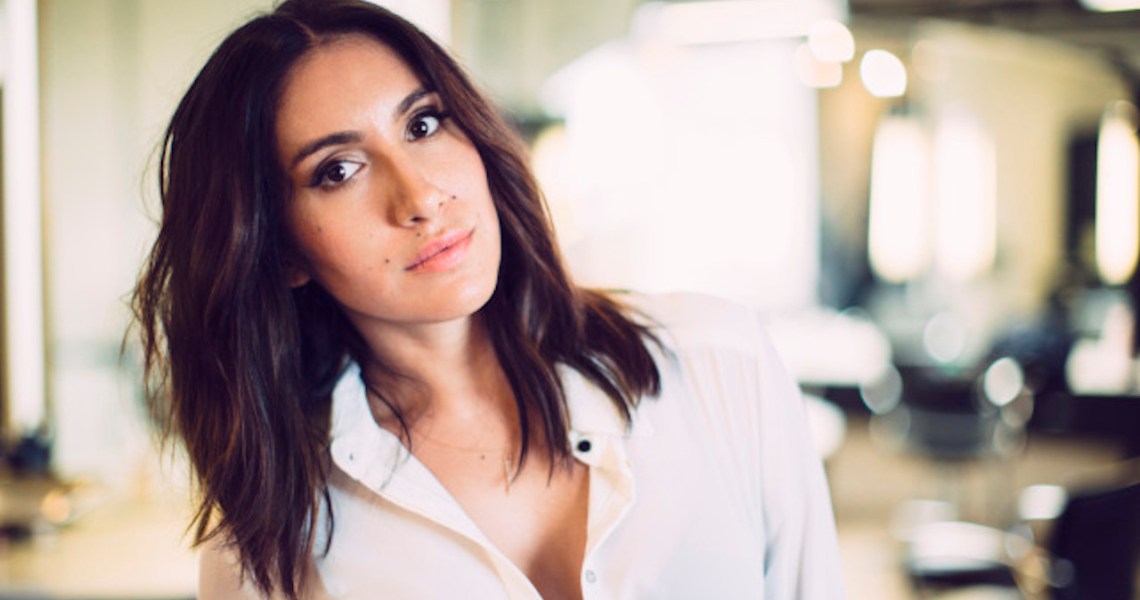Celebrity hairstylist Jen Atkin has been busy.
Her hair-care brand, Ouai, which brought in an estimated $23 million in sales in 2018, expanded into body care in May, and since January, the company has been increasing its video cadence and expanding its content focus on YouTube, to include videos beyond tutorials. Additionally, her editorial site, Mane Addicts, launched an incubator in April for six up-and-coming hairstylists called Creator Collective — the site itself relaunched in mid-October. By the end of the year, Mane Addicts will also make a play for YouTube.
Atkin spoke with Glossy about why video is so important for hair brands, how Mane Addicts and Ouai are approaching video, and what she thinks is behind the hair category’s growth.
What is Creator Collective, and what’s the relationship with Mane Addicts?
I am one person, and I can’t do everything. I was turning down a lot of opportunities, but also receiving a lot of texts and emails asking me, “Who’s good? Who’s great [at hair]?” I started researching hairstylists on [a fake Instagram] account that I created and narrowed it down to these six people to start with. Two years ago, I also teamed up with Revolve, and we do a ton of activations — so I now am sending our artists to go and do Revolve influencers’ hair for events like New York Fashion Week and Paris Fashion Week.
How will Mane Addicts approach content on its YouTube channel?
Video content is the next big thing with hair. I like to call it the MTV for hair, and these are our video jockeys [as opposed to disc jockeys], and we’re going to be doing some amazing content with a number of different brands like Dyson, Slip and ConAir. I’ve made sure that we are brand-neutral, so that we can work with every single hair-care, tool, [hair] extension and accessories company, and show an authentic look. I love the idea of being able to share information with a ton of people at once, versus going and doing small activations. We’re working on creating different series that we’re going to be launching, such as tutorials for every different type of event, type of hair and personality. We also want to really show the stylists and who they are in their everyday life. It’s not just for professionals, but it’s going to be information that is going to be pertinent to consumers.
How has Ouai’s own approach to YouTube changed over time?
We have around eight people dedicated to creating content between Mane Addicts and Ouai, and we [recently launched] an Ask Jen series on our Ouai channel that’s been one of our most popular series [with over 100,000 collective views on YouTube]. We also had a really fun take on Jimmy Kimmel’s mean tweets series, [where we read] some of our mean customer reviews from our old dry shampoo. We had a huge, positive response about that, and humanizing the brand is really important to us. We’re people who make products, and sometimes we make mistakes. We like to fess up to that and be honest about the whole journey.
What do you think is behind the growth of the hair category?
When we first launched [Mane Addicts] in 2014, there wasn’t a lot of playfulness going on, unlike now. With makeup, we’ve always been able to fit it with our personality or change our makeup to fit a mood. But I don’t think anybody ever felt like they could really change their hair outside of doing a bun or ponytail. Now extensions are less taboo, and [so is] playing with wigs or color. Instagram and social media have made it so we’re so much more globally connected. In the past, a fun color trend might only be popular in the U.K., or a blunt cut in Japan — but now we’re all [seeing more]. We’re also seeing more inclusivity. There haven’t been products for every single hair type and need. As the hair industry and the whole category expands, you’re going to see an increase in different types of hair products and different types of people being heard and spoken to.
How does Ouai plan to take advantage of this?
We are a consumer-connected brand, and our community really helped us to decide which categories we should go into next and helped us to create products along the way. We just launched body products, so the sky is the limit. The hard part about being a socially driven brand is our timelines are a little crazy, and we’re all wearing many hats. In the past, brands would roll out to retailers their plans for the next three years because they weren’t necessarily able to have conversations with consumers the way that we do, so they were throwing spaghetti at the wall.




